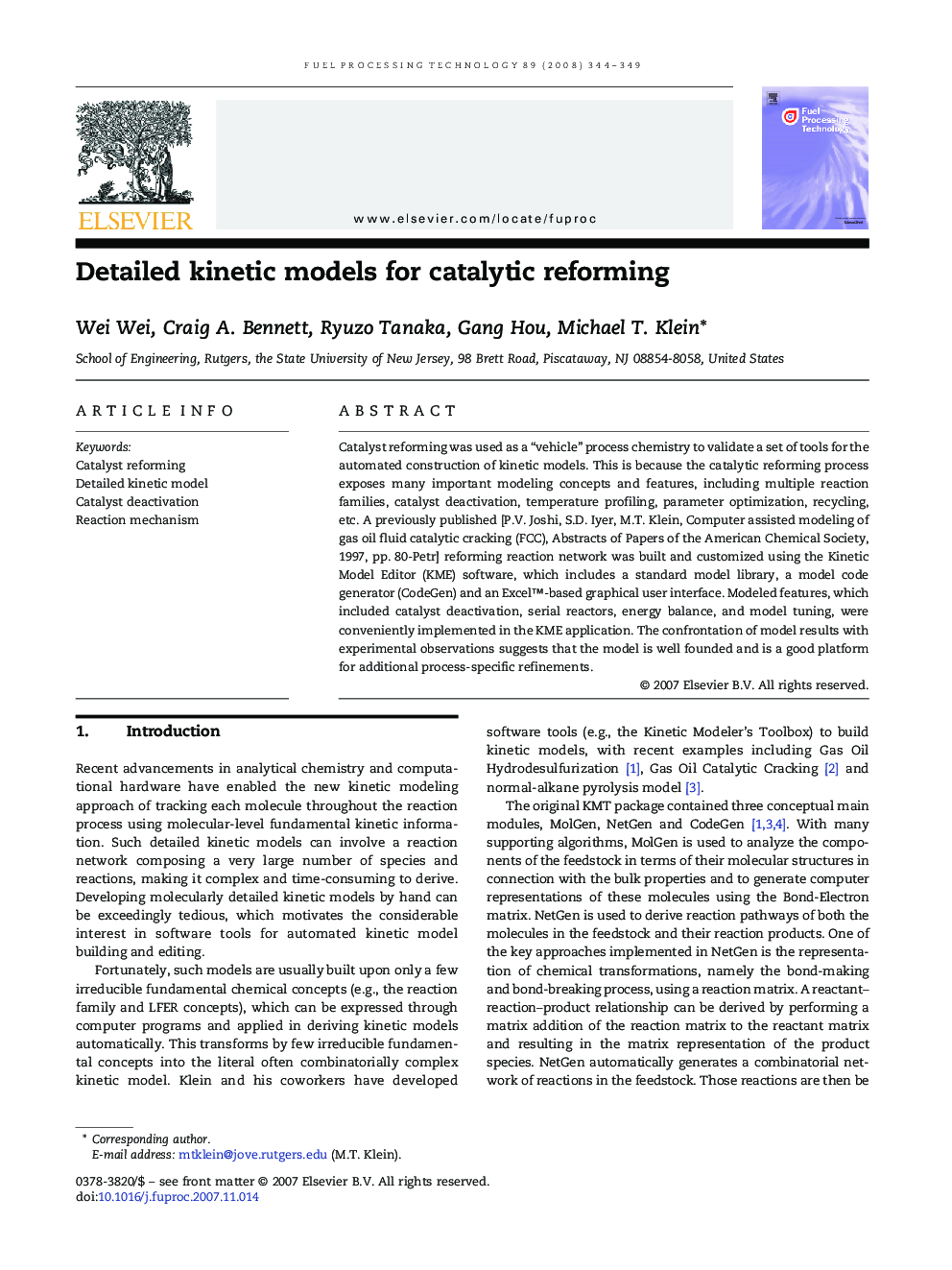| Article ID | Journal | Published Year | Pages | File Type |
|---|---|---|---|---|
| 211553 | Fuel Processing Technology | 2008 | 6 Pages |
Catalyst reforming was used as a “vehicle” process chemistry to validate a set of tools for the automated construction of kinetic models. This is because the catalytic reforming process exposes many important modeling concepts and features, including multiple reaction families, catalyst deactivation, temperature profiling, parameter optimization, recycling, etc. A previously published [P.V. Joshi, S.D. Iyer, M.T. Klein, Computer assisted modeling of gas oil fluid catalytic cracking (FCC), Abstracts of Papers of the American Chemical Society, 1997, pp. 80-Petr] reforming reaction network was built and customized using the Kinetic Model Editor (KME) software, which includes a standard model library, a model code generator (CodeGen) and an Excel™-based graphical user interface. Modeled features, which included catalyst deactivation, serial reactors, energy balance, and model tuning, were conveniently implemented in the KME application. The confrontation of model results with experimental observations suggests that the model is well founded and is a good platform for additional process-specific refinements.
